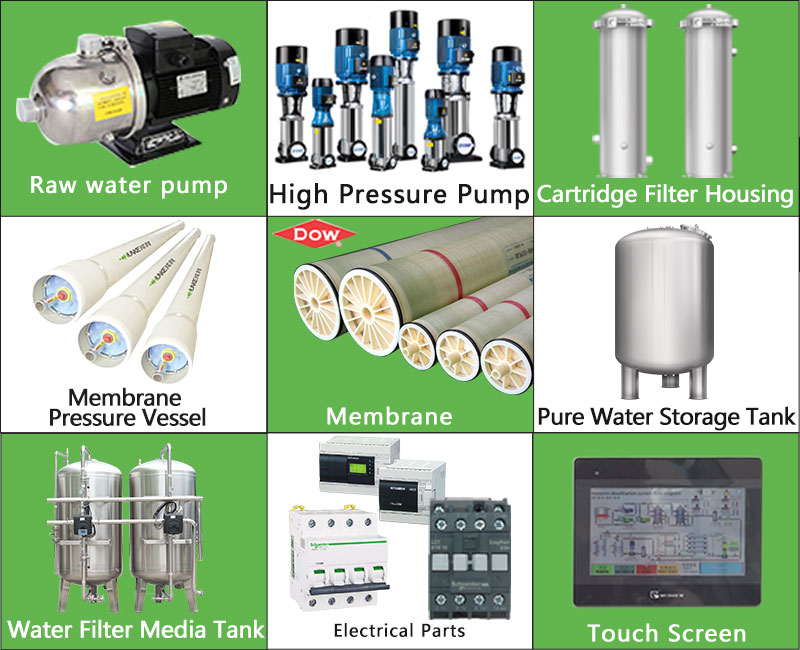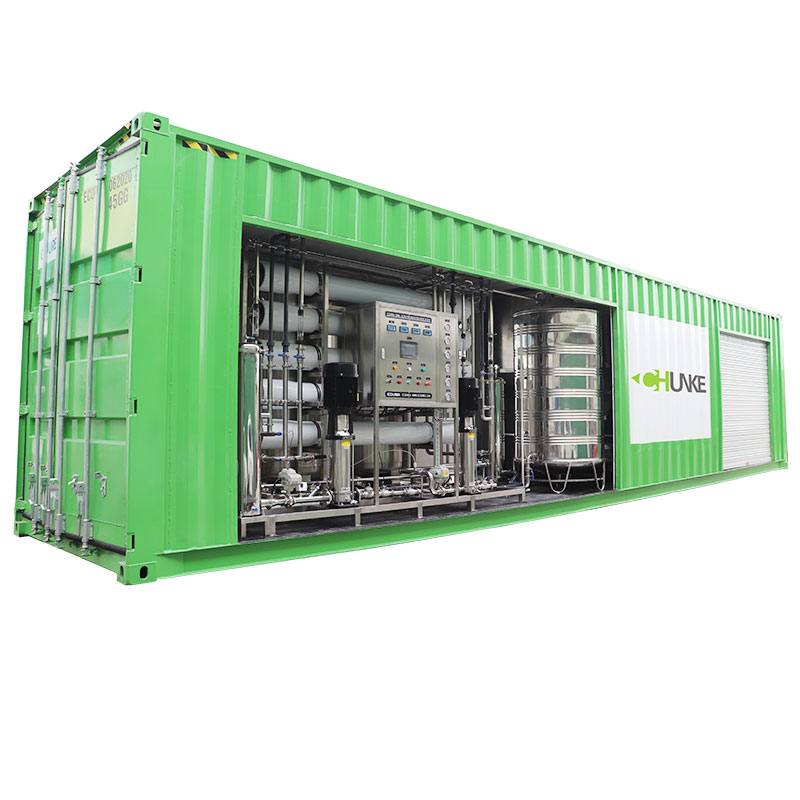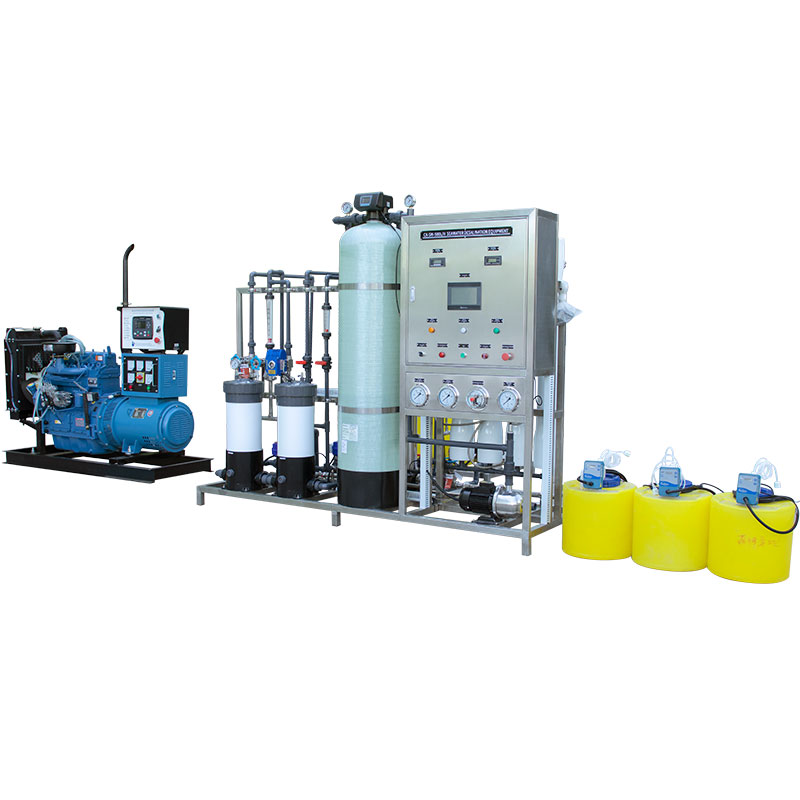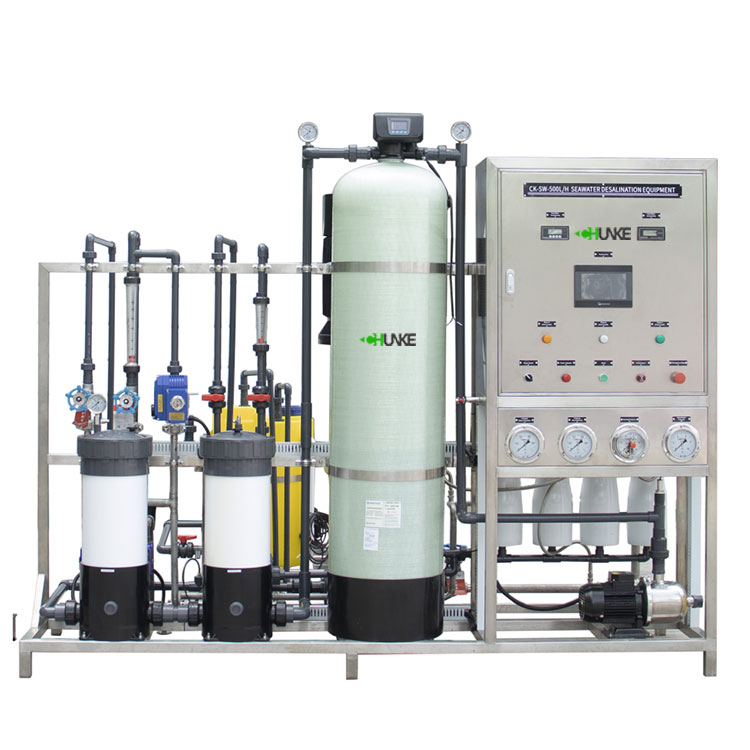Are there mobile desalination units? For example, containers?
In coastal and island areas, the importance of desalination technology is becoming increasingly prominent. Traditional desalination facilities are often large-scale and fixed in specific locations, making it difficult to cope with temporary and sudden water needs.
However, technological advances have brought us a new solution - mobile desalination units. In particular, mobile units based on container design are becoming an effective means to solve water problems in many regions due to their flexibility and convenience.

What is a mobile desalination unit?
The working principle of a mobile desalination unit is basically the same as that of a fixed unit, mainly achieved through reverse osmosis (RO) technology. Seawater passes through a reverse osmosis membrane under high pressure, and salt and impurities are intercepted to obtain fresh water. Mobile units are usually equipped with a series of pretreatment equipment, such as sedimentation, filtration, activated carbon adsorption, etc., to ensure that the seawater meets the standards for entering the reverse osmosis membrane, thereby improving the desalination effect and the life of the membrane.
What are the advantages of container-type design?
Container-type design is a typical representative of mobile desalination units. This design uses a standard 20-foot or 40-foot container as the shell and integrates the desalination equipment into it, which has the following advantages:
● Convenient transportation: Standard containers are easy to transport by truck, train or ship, and are suitable for various terrains and transportation conditions.
● Quick installation: After arriving at the destination, the device can be quickly installed and debugged, shortening the construction period.
● Strong flexibility: The container design is highly adaptable and can adjust the position according to needs to meet the water needs of different locations.
● Protect equipment: The container shell is sturdy and durable, and can effectively protect the internal equipment from the influence of the external environment.

What are the application scenarios of mobile desalination devices?
2.1 Emergency rescue:
When natural disasters (such as earthquakes, floods, typhoons) paralyze the water supply system, mobile desalination devices can be quickly deployed to provide emergency drinking water to the disaster area. For example, after the Haiti earthquake in 2010, many international rescue organizations used mobile desalination devices to help local residents overcome the water shortage.
2.2 Military use:
In military operations, especially in coastal or island areas, the troops have an urgent need for fresh water. Mobile desalination devices can move with the troops, provide a stable supply of fresh water, and ensure the basic living needs and combat effectiveness of officers and soldiers.
2.3 Offshore oil platforms:
Offshore oil platforms work at sea all year round, and fresh water supply is a major challenge. Mobile desalination devices can be directly installed on the platform and use seawater to prepare fresh water, which greatly facilitates the life and production of the platform.
2.4 Tourist resorts:
In some island resorts, the lack of fresh water resources is a common problem. Mobile desalination devices can provide these areas with a reliable supply of fresh water, improve the living conditions of tourists, and enhance the tourism experience.

What are the challenges of mobile desalination devices?
3.1 Energy consumption problem:
The energy consumption in the desalination process is high, which is one of the main challenges faced by mobile devices. In order to solve this problem, technicians are researching and developing more efficient reverse osmosis membrane materials and energy recovery devices. For example, some new high-efficiency and low-energy consumption reverse osmosis membranes have been put into use, which can significantly reduce energy consumption.
3.2 Equipment maintenance:
Because mobile devices are often in different environments, equipment maintenance becomes more complicated. To this end, manufacturers have adopted a modular design that makes the disassembly, cleaning and replacement of equipment more convenient. In addition, many devices are equipped with automated control systems and remote monitoring systems, which can monitor the operating status of the equipment in real time and detect and solve faults in a timely manner.
3.3 Brine discharge:
How to deal with the brine generated during the desalination process is a problem that needs to be solved. Mobile devices are usually equipped with a brine discharge management system that can adjust the discharge method according to environmental conditions to reduce the impact on the environment. For example, in a marine environment, brine can be evenly discharged through a diffuser to avoid local high salinity effects on the marine ecosystem.

What is the cost of a mobile desalination unit?
4.1 Equipment cost:
The equipment cost of a mobile desalination unit mainly includes containers, reverse osmosis membranes, pumps, pretreatment systems, energy recovery devices and control systems. Depending on the size and configuration of the equipment, the cost varies greatly. Generally speaking, the price of a mobile desalination unit in a standard 20-foot container ranges from US$500,000 to US$1 million.
4.2 Operating costs:
Operating costs mainly include energy costs, chemical costs, equipment maintenance costs and employee wages. Despite the high energy consumption, the operating costs of modern mobile desalination units have been reduced through optimized design and energy recovery devices. Taking a 100 cubic meter per day unit as an example, its daily operating cost is approximately between US$200 and US$400.
4.3 Economic Benefits:
Despite the large initial investment, the application value of mobile desalination units in emergency rescue, military purposes and special industries cannot be ignored. By providing a reliable supply of fresh water, it can effectively guarantee people's basic living needs, improve production and work efficiency, and have significant economic and social benefits.
Conclusion
Mobile desalination units, especially those based on container design, are becoming an important means to solve the problem of water shortage with their flexibility, convenience and efficiency.
Despite some technical and cost challenges, with the advancement of technology and the growth of market demand, its application prospects are broad.




